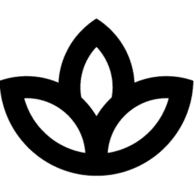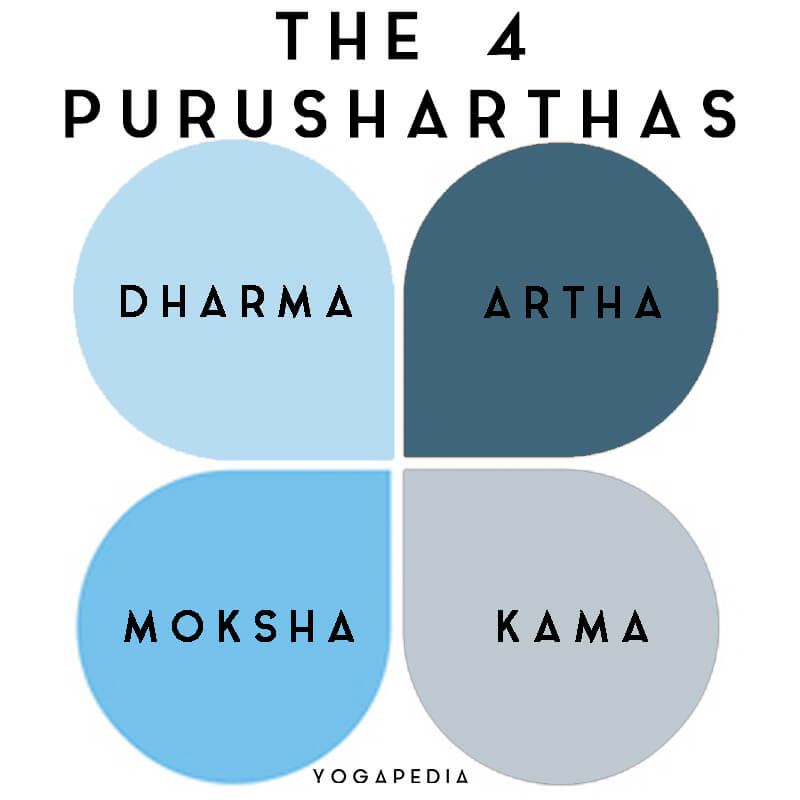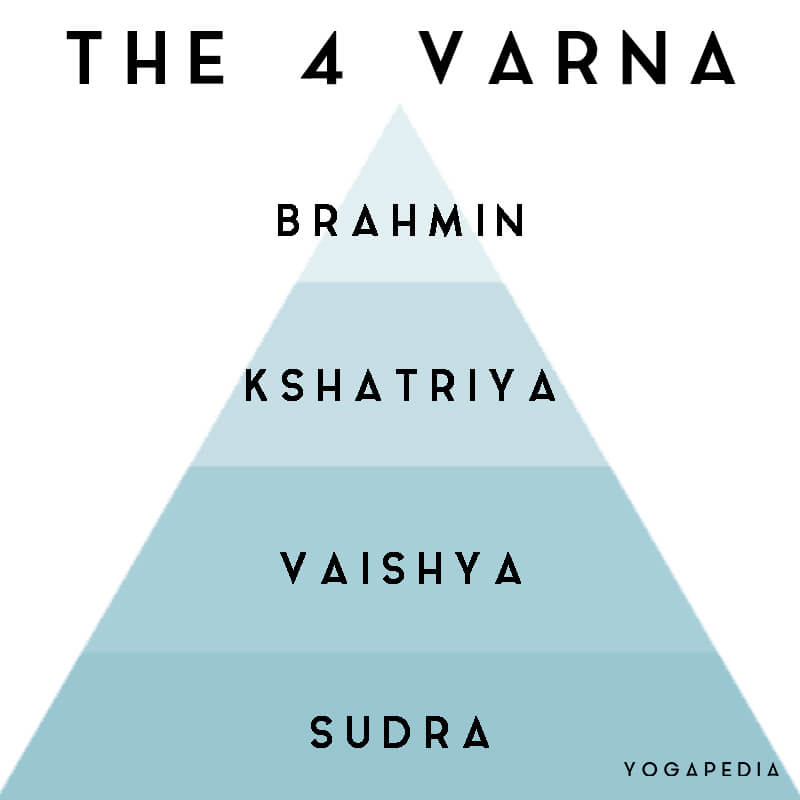We hear the term dharma used frequently in the Western world. People talk about wanting to follow their dharma. But what exactly does that mean?
The Monier-Williams Sanskrit-English dictionary defines dharma as:
That which is established or firm, practice, customary observance or prescribed conduct; duty, right, justice, virtue, morality, religion, religious merit, good works.

Email Newsletter
Subscribe and get the stories about the greater change that comes from yoga.
In Hinduism, dharma is considered one of the four purusharthas or aims of life. The others are: artha (security, including financial security), kama (pleasurable activities) and moksha (freedom from the cycle of birth and death). (Learn more in The Meaning of Moksha.)
While the “dh” sound is not found in English, the closest approximation we have to it is “the.” Your tongue goes to the back of your top teeth for the first syllable. If you want to practice dharma, a first step is to pronounce the word correctly. It is pronounced like “Dhur-maah.” The first syllable rhymes with fur.
The History of Dharma
Dharma is the first word mentioned in the Bhagavad Gita (“The Song of God”). King Dhitarashtra asks his advisor, Sanjaya, about the battle that is about to take place on the field of dharma (the dharma-kshetra).
Arjuna is reluctant to engage in this battle. He feels that it will be a violation of his dharma, or adharmic. Some of his family members and his teacher are on the other side of the battle. However, Lord Krishna advises him that is his dharma, his duty, as a member of the Kshatriya caste (warriors) is to fight.
Krishna elucidates:
“Now if you do not execute this battle, then having given up your personal dharma and reputation, you shall incur sin.”
The Castes
In the olden days, roles in society were well-defined. People had certain roles in life. The caste system actually gave individuals a wider understanding of how they were to contribute to the greater good of society.
Very generally, the Brahmins (Bra-muhns) performed the rituals or the pujas. They provided spiritual upliftment and guidance. The Kshatriays (shut-ree-yaahs) were the Kings, rulers, and also the warriors that protected localities. The Vaishyas (Vaa-shyaz) were the merchants and the Shudras (shoo-druhs) were the laborers.
While the system may seem unequal, people were trained in doing their duty and adhered to it. All the roles were carried out.
In Chapter 3 of the Gita, Krishna states:
"It is better to do one's own duty imperfectly than to do someone else's duty perfectly. Even dying while performing one's own duty is superior; but the consequence of following someone else's duty is dangerous."
In the Bhagavad GIta, dharma serves to help an individual in understanding their connection with the eternal soul and God.
Dharma Today
Today, roles are not as clearly defined. Yet, we can still draw on this ancient wisdom to determine our dharma.
Dharma involves acting for the upliftment of ourselves, individually, as well as for the world as a whole. It involves invoking the principle of ahimsa (do no harm). (Learn more in Ahimsa: The Number One Yama of the First Limb of Yoga.)
Practicing Universal Dharma
Here are some ways to uphold dharma in your daily life:
- Practice kindness
- Be generous
- Practice philanthropy
- Act selflessly
- Be truthful
- Be even-tempered
- Act in accordance with moral law
- Do not hurt others in thought, word, or action
- Cultivate the divine virtues embraced by Hinduism
- Protect and care for the environment
(Learn more in A Call to Action: Karma Yoga's Origins and How to Practice This Selfless Lifestyle.)
Practicing Individual Dharma
On daily basis, we must also adhere to our duties in our daily lives, and strive to meet them via right conduct. Your dharma is also to act nobly as a child, spouse, partner, parent, sibling, employer, employee, citizen, global citizen and as all other positions you hold.
For each of the roles we play in life, we have varying responsibilities.
For example, as a parent we have to protect and care for our children. However, as an employee, we must do our work in a way that benefits the entire organization, as well as its mission.
Dharma and Vedic astrology
We also have our own unique talents. Long ago, Hindus understood that their dharma was to share their expertise with their family, friends, and community. Some of us are writers, singers, healers, mathematicians, bakers, dancers, educators, lawyers, or other roles.
A primary way through which Indians understand their skills and how to utilize them in the world is via Vedic astrology or Jyotish. Parents have a chart prepared for their young children and receive guidance on fields of study, as well as the creative endeavours in which their child can excel.
The astrological chart clearly spells out what our dharma is and how we should pursue it in life. It reveals the inborn gifts that the individual is meant to share and the best ways to express them. The chart reveals the purpose of the soul’s current incarnation and how the soul can fulfill its dharma in this lifetime.
When we are in harmony with our dharma, then we feel that we are heeding the call of our inner nature. It allows us to feel fulfilled and also add value to others around us, as well as to the whole of society.
During These Times of Stress and Uncertainty Your Doshas May Be Unbalanced.
To help you bring attention to your doshas and to identify what your predominant dosha is, we created the following quiz.
Try not to stress over every question, but simply answer based off your intuition. After all, you know yourself better than anyone else.


